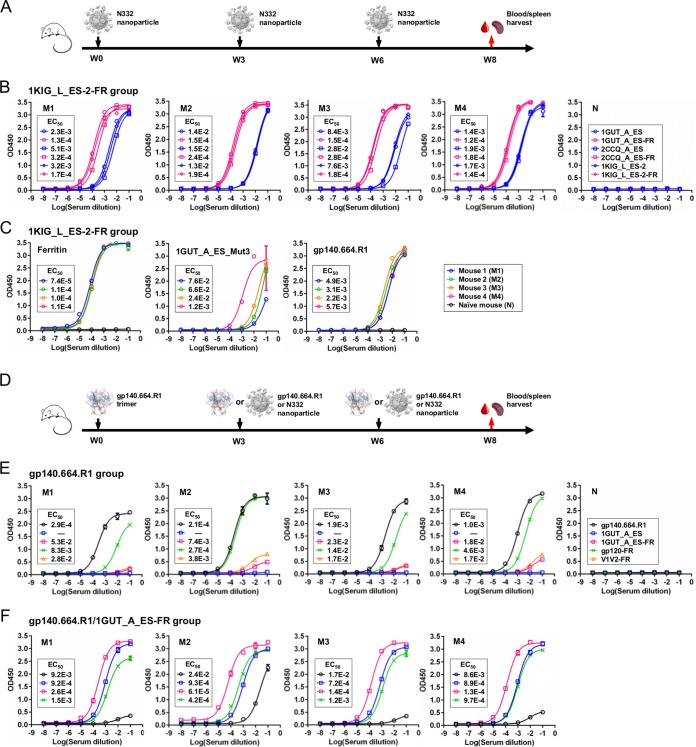FIG 6 .
Analysis of the antibody response to the N332 supersite in mouse antisera. (A) Schematic view of the immunization regimen to test two N332 nanoparticles in BALB/c mice (W, week). (B) ELISA binding of mouse antisera from the 1KIG_L_ES-2-FR group to 3 pairs of monomeric and particulate N332 scaffolds (M, treated mouse; N, naïve mouse). (C) ELISA binding of mouse antisera from the 1KIG_L_ES-2-FR group to ferritin, a mutated 1GUT_A_ES antigen—1GUT_A_ES_Mut3—with three glycan knockout mutations (N295A, N301A, and N332A), and the native-like gp140.664.R1 trimer (46). (D) Schematic view of the immunization regimen to test the gp140.664.R1 trimer and a trimer-prime/epitope-boost strategy in BALB/c mice. (E) ELISA binding of mouse antisera to the gp140.664.R1 trimer, a pair of monomeric and particulate N332 scaffolds, a V1V2 nanoparticle, and a gp120 nanoparticle (48) for 4 subjects from the trimer-alone group. (F) ELISA binding of mouse antisera to the same set of antigens as described for panel E for 4 subjects from the heterologous prime/boost group. The immunogens and the regimen details are labeled on the diagram for panels A and D. A naïve mouse sample was included in the ELISA as a control, as shown in panels B and E. The EC50 values are labeled for all ELISA plots in panels B, C, E, and F, except for instances in which the highest OD450 value was below 0.1 or in the cases of ambiguous data fitting.

